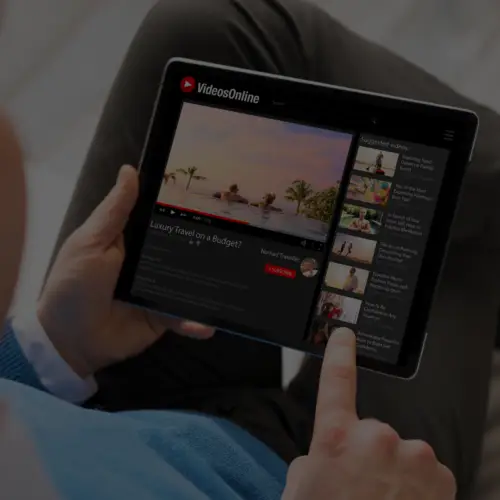20 Aug Lessons Learned in the Past Five Years of Social Media Marketing
This summer has certainly been a time of celebration for us here at Ignite Social Media as we hit our fifth anniversary as a company. We’ve used this landmark as an opportunity to reflect on how far the agency has come and how much each of us have learned. Along with that reflection, I’ve asked each team in the agency to think of their most important lessons and share them with you here:
Creative: Creativity is Everywhere
By Creative Director Dave Ryan
 In the past five years, advancements in technology have created a major shift in the way people think about creativity and self-expression. Today, all you need is an Internet-connected laptop with a webcam to create content that has the potential to influence millions of people. In the world of Twitter, YouTube and countless mommy bloggers, you don’t necessarily have to be an artist to create art and you don’t need to be a writer to speak for your generation.
In the past five years, advancements in technology have created a major shift in the way people think about creativity and self-expression. Today, all you need is an Internet-connected laptop with a webcam to create content that has the potential to influence millions of people. In the world of Twitter, YouTube and countless mommy bloggers, you don’t necessarily have to be an artist to create art and you don’t need to be a writer to speak for your generation.
What does that mean for us traditionally trained artists and writers and for the brands we represent? It means that over the past five years we’ve had to learn how to compete with the Internet sensations, how to work with them and how to draw inspiration from them. The constant influx of clever, inspiring material has forced us to stay sharp and to develop the habit of always looking for new, innovative ways to reach audiences. It has taught that wit and sincerity beat flashy sales speak every time and that it’s not enough to create content that talks to consumers, you’ve also got to inspire them to talk back.
Metrics: One Data Set Does Not Fit All
By VP of Consumer Insights & Analytics Misi McClelland
 Within the past five years, almost everything has been tweaked, optimized, changed, and re-defined in the world of metrics in social media. Originally, social began as simply having presence, but today it’s all based on what’s relevant and what works for your specific business. Perhaps the most important thing that our metrics team has learned in the past five years is that it’s critically important to find the metrics that matter for your business and not just every piece of data under the sun. There are no magic formulas or equations that define why impressions for X brand are better than Y brand. There is no third-party monitoring tool that will provide the most effective sentiment analysis for every brand. It’s up to each business team to figure out the most important goals of its brand, whether that be percentage growth, virality, reach or bounce rate, and to plan those metrics accordingly. Not all Facebook and Twitter accounts are created equal – it’s all based on what you’ve done and what you hope to achieve.
Within the past five years, almost everything has been tweaked, optimized, changed, and re-defined in the world of metrics in social media. Originally, social began as simply having presence, but today it’s all based on what’s relevant and what works for your specific business. Perhaps the most important thing that our metrics team has learned in the past five years is that it’s critically important to find the metrics that matter for your business and not just every piece of data under the sun. There are no magic formulas or equations that define why impressions for X brand are better than Y brand. There is no third-party monitoring tool that will provide the most effective sentiment analysis for every brand. It’s up to each business team to figure out the most important goals of its brand, whether that be percentage growth, virality, reach or bounce rate, and to plan those metrics accordingly. Not all Facebook and Twitter accounts are created equal – it’s all based on what you’ve done and what you hope to achieve.
Client Services: Stay Connected and Build on Experience
By Account Director Meredith Sparrow
 Staying relevant is paramount to social media success. For us, staying relevant means keeping up with the latest ways to connect with each other and our clients, identifying and creating best practices for social media marketing, and evolving how social media fits within the marketing mix. When we started Ignite Social Media in 2007, we emailed our clients exclusively from our desks, made conference calls and brainstormed on walls with whiteboard paint. Now, we’re far more likely to fire off an email from our phones, have a video chat on Lync and write down our best ideas on Smart Boards.
Staying relevant is paramount to social media success. For us, staying relevant means keeping up with the latest ways to connect with each other and our clients, identifying and creating best practices for social media marketing, and evolving how social media fits within the marketing mix. When we started Ignite Social Media in 2007, we emailed our clients exclusively from our desks, made conference calls and brainstormed on walls with whiteboard paint. Now, we’re far more likely to fire off an email from our phones, have a video chat on Lync and write down our best ideas on Smart Boards.
In the past five years, we’ve also learned how to build on our experience. I remember our first major contest: Good Mood Gig for Nature Made Sam-e Complete. Since then, we’ve had to completely change how we do contests and promotions, from writing official rules to blogger outreach. One of our latest social media promotions was a social media contest for Jeep that culminated in a live event at the Winter X Games. Back in 2007, brands were just starting to gain Facebook fans and Twitter follower. Now, activating those fan bases is a regular occurrence.
Community Management: Community Managers Don’t Grow on Trees
By Vice President of Community Management Erin Ledbetter
 So it’s a little cliché, but it’s also very true. Finding the perfect fit to manage your company’s channels may not be as easy as you think. This is no job for an intern. It takes a dedicated full-time employee to make sure your brand’s channels are working for you, not against you. By our definition, community managers are almost equal parts: creative writers, marketers, customer service reps, traffic controllers, researchers, hall monitors, product specialists and psychologists. You’re probably wondering how one person wears so many hats. Where do you find these super human Jacks and Jills of all trades?
So it’s a little cliché, but it’s also very true. Finding the perfect fit to manage your company’s channels may not be as easy as you think. This is no job for an intern. It takes a dedicated full-time employee to make sure your brand’s channels are working for you, not against you. By our definition, community managers are almost equal parts: creative writers, marketers, customer service reps, traffic controllers, researchers, hall monitors, product specialists and psychologists. You’re probably wondering how one person wears so many hats. Where do you find these super human Jacks and Jills of all trades?
If you took a look at the résumés of our Community Management team here at Ignite Social Media, you would find an eclectic mix of experiences ranging from radio DJ to personal trainer and almost anything you can imagine in between. But there’s more to success than a skill set. Over the past five years, we’ve developed an intensive selection process designed to determine a candidate’s social media intellect as well as their ability to translate the client’s message into a diverse set of channels. A community manager’s ability to understand the psychology of their audience is key to their ability to convey the marketing messages of their client in a way that does not feel contrived. To measure this, we’ve designed a community management test that allows us to more accurately determine a candidate’s social media IQ. This test has no correct answer, but instead focuses on creative problem solving skills and their ability to understand and satisfy the wants and needs of the audience in a way that is consistent with the brand’s message. If you’re looking for a potential community manager, look for one with the ability to draft good content quickly and consistently, respond to an array of questions and concerns, and handle crises calmly and efficiently.
Strategy: Know Your Client and Know Your Audience
By Vice President of Strategy and Special Programs Lisa Braziel
 When we started our first social strategy, we knew we needed as much information from the client as we could get. As we’ve progressed, we’ve learned that better client inputs simply equate to better social strategy. The clients who share research and findings on their product, the consumer purchase cycle and how other mediums show success are the clients that give us the inputs to create strategies that are better aligned to business results. In fact, it is through our clients sharing regular data with us that helped us develop more sophisticated methods of showing social media ROI.
When we started our first social strategy, we knew we needed as much information from the client as we could get. As we’ve progressed, we’ve learned that better client inputs simply equate to better social strategy. The clients who share research and findings on their product, the consumer purchase cycle and how other mediums show success are the clients that give us the inputs to create strategies that are better aligned to business results. In fact, it is through our clients sharing regular data with us that helped us develop more sophisticated methods of showing social media ROI.
Five years has also taught us to put people before technology. When social media marketing was young, a lot of companies employed a “test the waters” strategy and jumped into as many social networks as were available at the time. We had a hunch that this approach couldn’t be sustainable and would be a difficult strategy to prove success around, but third party data like Forrester Research’s Consumer Technographics and POST methodology helped reinforce it. Through these studies, we learned to consider the target audience before recommending the technology to engage.
Tech: It’s the Browser, Stupid
By Chief Technology Officer Gene Smith
 At its most basic level, the social space is built on interaction – more specifically the interaction between the user and an application or platform. In most cases, the web browser is the doorway through which those interactions take place.
At its most basic level, the social space is built on interaction – more specifically the interaction between the user and an application or platform. In most cases, the web browser is the doorway through which those interactions take place.
What we’ve learned over the past five years is that the rise of the modern browser has marked a fundamental shift in the way we develop applications and the way in which users interact with our applications. Users expect instant interaction when engaging in social activity. They want/need to know that their actions are being noticed and require that responses be made in real-time. For that reason, more and more of the interactive heavy lifting is being pushed to the browser and away from the server to make this happen. It’s also the reason why Facebook, Twitter, and other social applications don’t support IE7 and other older browsers.
Recent innovations and new tools and frameworks (HTML5, Node, MondoDB, Handlebars, Meteor, Backbone, Responsive Design, etc.) have made it possible to write applications using HTML, CSS, and JavaScript that better utilize the native functionality of the web browser without having to resort to using non-native plugins. So, the big shift in my eyes over the past several years is the move away from potentially resource hogging third party plugins and toward built-in browser functionality – resulting in a truly frictionless and seamless experience for the end user.






